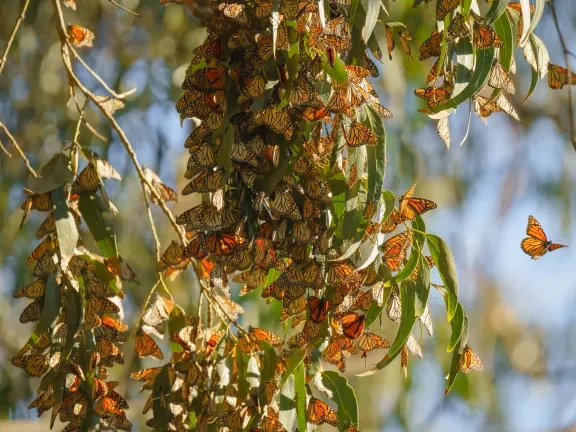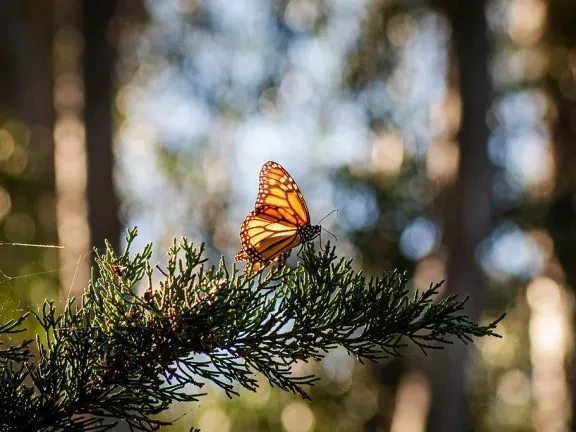The western monarch is arguably one of the most recognizable butterflies in California. Monarchs are known for their vibrant orange and black wings and unique long-distance, multi-generational migration cycle. Millions of western monarchs used to return to California every year, in the 1980s, an estimated 4.5 million butterflies migrated to the coast annually. However, the population has plummeted in recent decades from these historic numbers, and fewer than 2,000 butterflies were counted in 2020. Numerous factors have contributed to this decline, including habitat loss, pesticides, and disease. Fortunately, the western monarch population has rebounded in the past couple of years, with over 300,000 butterflies counted in 2021–2022.
The California state park system holds critical habitat for western monarchs – providing shelter and protection for this iconic species. Many state parks are home to key monarch overwintering sites located along important migration routes. These places offer the appropriate microclimate conditions for clustering, provide nectar resources, and minimize stressors to the butterflies.
Together, we can ensure that these magnificent creatures and the state parks they overwinter in, are protected now and for generations to come.

